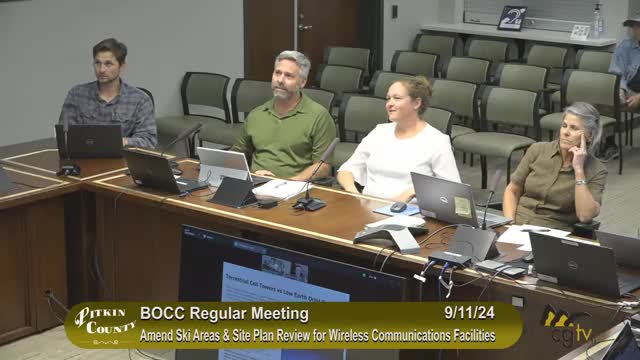Starlink satellites spark debate over night sky visibility
September 11, 2024 | Pitkin County, Colorado
This article was created by AI summarizing key points discussed. AI makes mistakes, so for full details and context, please refer to the video of the full meeting. Please report any errors so we can fix them. Report an error »

In a recent government meeting, discussions centered around the implications of Starlink satellite technology and its potential applications in remote areas. Chad, a key speaker, explained the differences between Starlink's satellite communication and traditional cellular networks, emphasizing that while Starlink can provide connectivity in hard-to-reach locations, it faces limitations when connecting directly to multiple devices, such as cell phones.
The conversation also touched on the visual impact of Starlink satellites, which are increasingly visible in the night sky. As more satellites are launched to enhance capacity, concerns about their aesthetic presence are expected to grow. Experts noted that the deployment of these lower orbit satellites could lead to regulatory challenges as communities become more aware of their visibility.
The meeting highlighted the long-term vision for expanding connectivity, with a focus on leveraging existing fiber networks to support the initiative. Participants expressed optimism about the public safety benefits of improved connectivity, despite the financial risks involved. Additionally, there was excitement about the potential for new applications, such as mobile ordering, which could enhance user experience in remote areas.
Overall, the discussions underscored the balance between technological advancement and community impact, as stakeholders navigate the complexities of integrating satellite technology into everyday life.
The conversation also touched on the visual impact of Starlink satellites, which are increasingly visible in the night sky. As more satellites are launched to enhance capacity, concerns about their aesthetic presence are expected to grow. Experts noted that the deployment of these lower orbit satellites could lead to regulatory challenges as communities become more aware of their visibility.
The meeting highlighted the long-term vision for expanding connectivity, with a focus on leveraging existing fiber networks to support the initiative. Participants expressed optimism about the public safety benefits of improved connectivity, despite the financial risks involved. Additionally, there was excitement about the potential for new applications, such as mobile ordering, which could enhance user experience in remote areas.
Overall, the discussions underscored the balance between technological advancement and community impact, as stakeholders navigate the complexities of integrating satellite technology into everyday life.
View full meeting
This article is based on a recent meeting—watch the full video and explore the complete transcript for deeper insights into the discussion.
View full meeting
